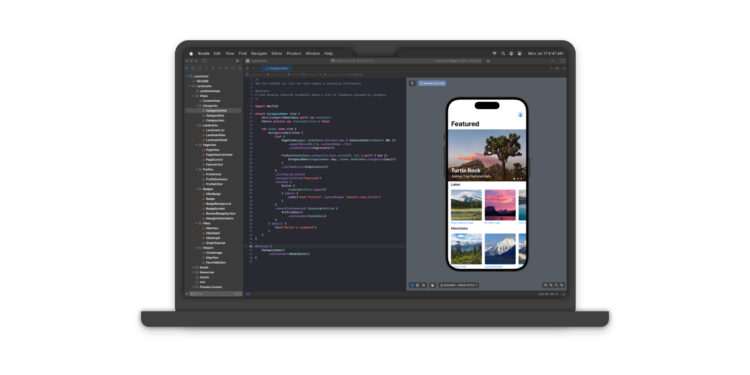If you develop apps for Apple platforms, you've probably already come across SwiftUI. The idea behind the framework is compelling: modern, declarative UI development for all Apple devices – from iPhone to Mac. In practice, however, it's repeatedly shown that SwiftUI doesn't yet cover all requirements. This has been a particular problem with more complex input fields and web content. Now there are indications that Apple is improving precisely these areas.
Apple has long considered SwiftUI the future standard for user interfaces. In many cases, it works well—especially for simple or moderately complex apps. However, there have been two major weaknesses that have frustrated many developers: the lack of rich text input and the cumbersome embedding of web views. New reports now indicate that Apple is addressing both issues.
Native rich text input for SwiftUI is coming
According to Bloomberg's Mark Gurman, who reported on this in his newsletter "Power On," SwiftUI will soon have a native rich-text editor. Until now, it was only possible to display formatted text—not enter it. Anyone wanting to enter bold, italic, or underlined text had to resort to UIKit components, integrate third-party media libraries, or devise workarounds that often undermined SwiftUI's declarative concept. An integrated rich-text editor would close this gap and significantly simplify work. For apps where text input plays a central role—such as note-taking, messaging, or document editing—this is an important step forward. Developers would then be able to implement even more complex text input cleanly in the SwiftUI style without compromising on structure or maintainability.
Web views soon embeddable directly in SwiftUI
Gurman's report addressed another innovation: Apple is said to be preparing a native API that would allow web views to be embedded directly into SwiftUI. This, too, has been a weak point of the framework to date. Anyone wanting to integrate web pages into an app had to rely on UIKit or other workarounds, which meant additional code and maintenance effort. The new API would change that. References to the new code can already be found on WebKit's official GitHub page. This native solution would enable developers to integrate web content into their SwiftUI apps more easily and reliably—without any breaks between the frameworks.
What this means for you as a developer
Both changes specifically address weaknesses that have long been recognized in the SwiftUI community. The lack of rich text input and the complicated integration of web content have repeatedly been obstacles for developers who wanted to fully embrace SwiftUI. The planned innovations could make SwiftUI more attractive for many projects—especially for those who have been hesitant. Even though these are just two items on a long wish list, they are key elements that play an important role in many app categories.
SwiftUI grows up: Apple responds to developer feedback
Apple appears to be deliberately evolving SwiftUI to make it practical for more use cases. If SwiftUI has held you back because you were missing important features, it's worth taking a closer look. The planned support for rich text and native WebViews could be the push you've been needing to seriously consider SwiftUI again. It remains to be seen when exactly the new features will be available—but the direction is right. (Image: Apple)
- Apple upgrades Shortcuts: Automation via AI
- Siri gets an AI upgrade – but Apple is arguing internally
- macOS 26 is probably called “Tahoe” – new design is coming
- Apple on a cost-cutting course: WWDC 2025 without any big surprises
- WWDC 2025: Apple skips iOS 19 and focuses on iOS 26





